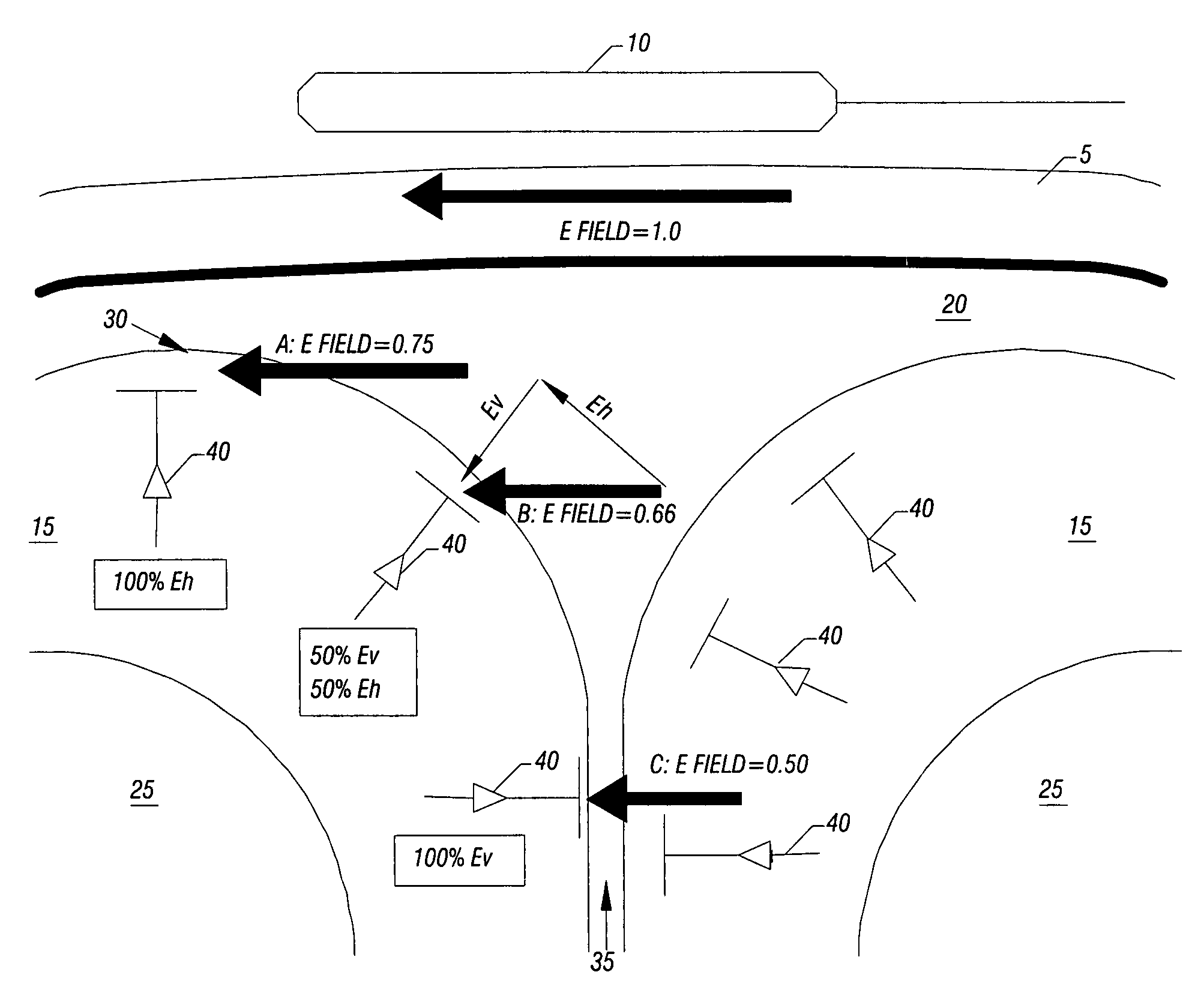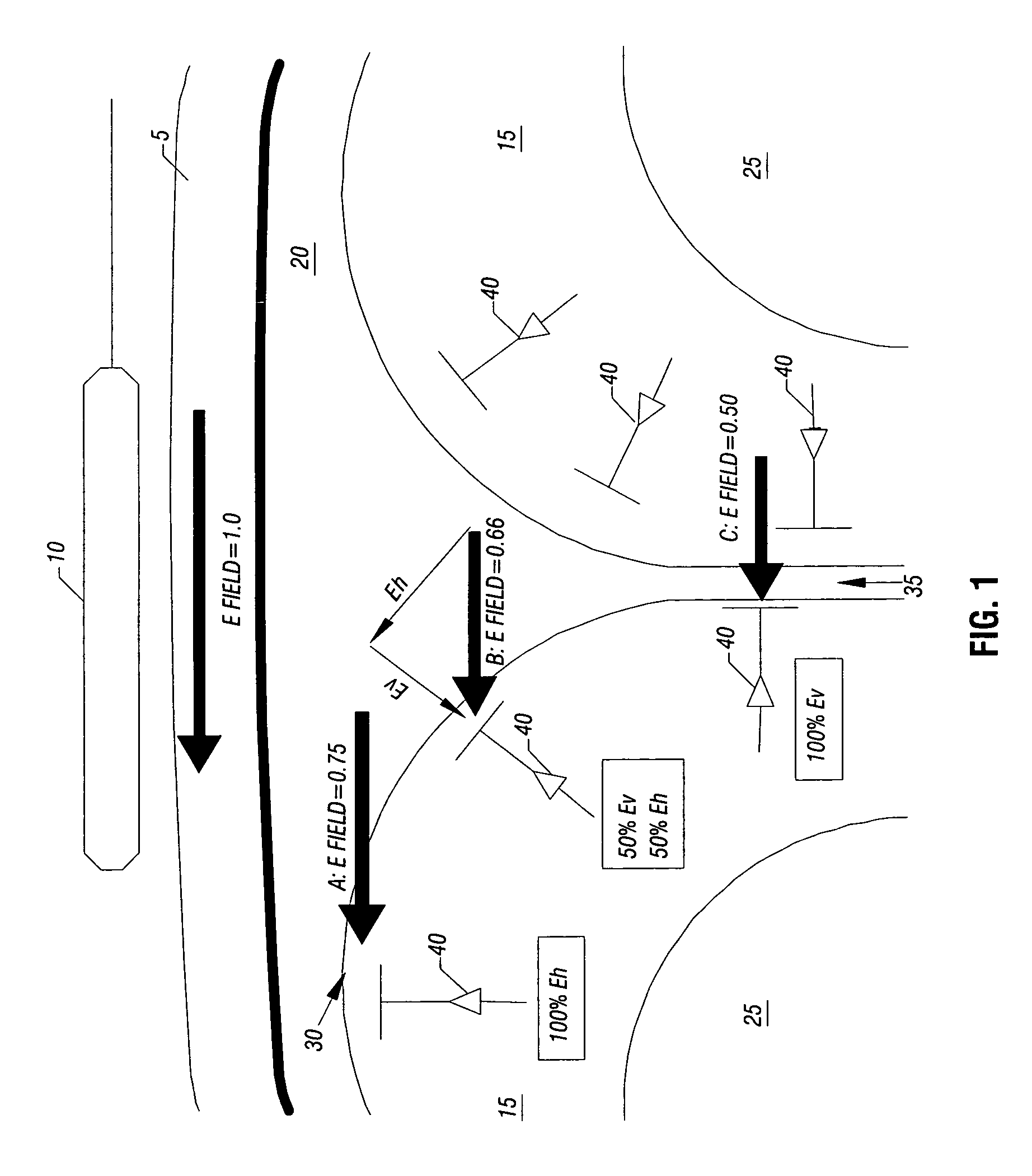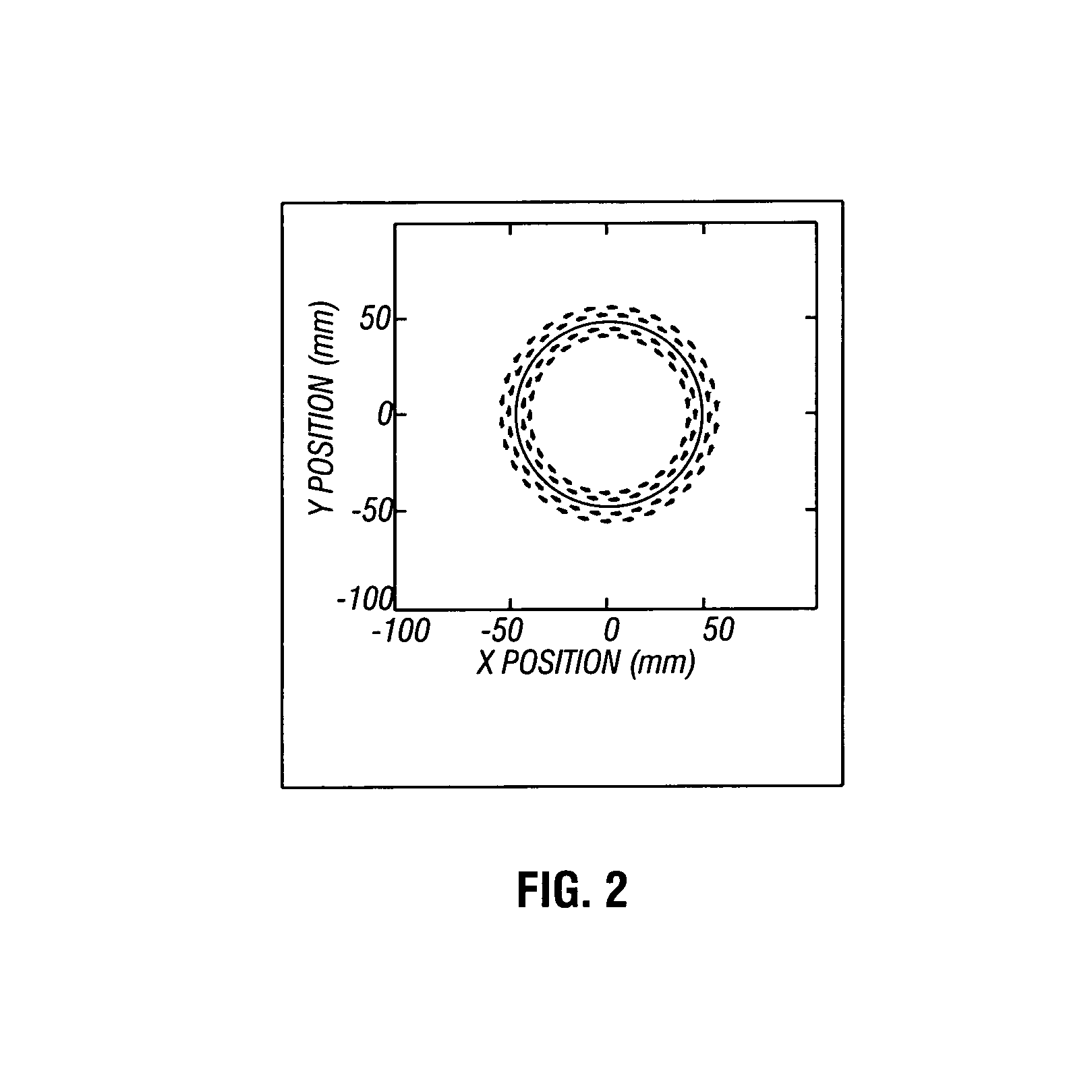Apparatus and methods for delivery of transcranial magnetic stimulation
a transcranial magnetic stimulation and apparatus technology, applied in the field of transcranial magnetic stimulation, can solve the problems of inability to determine the proper orientation of the patient, unsafe hand-held delivery, and inconvenient hand-held delivery, so as to reduce the electric field on the patient, reduce the electric field, and reduce the power. effect of the minimum amoun
- Summary
- Abstract
- Description
- Claims
- Application Information
AI Technical Summary
Benefits of technology
Problems solved by technology
Method used
Image
Examples
experiment 1
[0076] By Principle 3, maintaining the E-field at a field orientation but varying the strength of the field should vary the degree of TMS-induced neuronal activity. Eight normal volunteers were imaged by PET while undergoing 3-Hz TMS stimulations across a range of intensities. Stimulation was applied to the Supplementary Motor Area on the medial surface of the right frontal lobe of the cerebral hemisphere. The E-field was oriented perpendicular to the cortical surface, which was also perpendicular to the mid-sagittal plane and exactly 90° rotated from the orientation required by the “B-nose” principle, described above. This stimulation produced strong activation on the medial-bank cortical surface at the location in which the E-field was most perpendicular to the cortical surface, as predicted by Principles 2 and 3. Response magnitude was highly correlated with TMS E-field strength, as predicted by Principle 3.
experiment 2
[0077] By Principles 2 and 3, varying the orientation of the TMS E-field relative to the cerebral cortical surface should modulate response magnitude, with the greatest response being observed when the E-field is perpendicular to the cortical surface. Twelve normal volunteers were imaged by PET while undergoing 3 Hz TMS at fixed intensity but varying orientation: 0°, 30°, 60° and 90° relative to the cortical surface. Stimulation was applied to the foot area of primary motor cortex. As predicted by Principles 2 and 3, the response was located on the bank of the central sulcus, rather than on the gyral crown. Also as predicted by the same principles, response magnitude was highly correlated with TMS E-field orientation, with the greatest response occurring when the field was at 90° to the cortical surface, as shown in FIG. 6.
[0078]To take advantage of the aiming principles set forth herein, it is desirable to use a TMS stimulator having properties which allow it to generate an E field...
PUM
 Login to View More
Login to View More Abstract
Description
Claims
Application Information
 Login to View More
Login to View More - R&D
- Intellectual Property
- Life Sciences
- Materials
- Tech Scout
- Unparalleled Data Quality
- Higher Quality Content
- 60% Fewer Hallucinations
Browse by: Latest US Patents, China's latest patents, Technical Efficacy Thesaurus, Application Domain, Technology Topic, Popular Technical Reports.
© 2025 PatSnap. All rights reserved.Legal|Privacy policy|Modern Slavery Act Transparency Statement|Sitemap|About US| Contact US: help@patsnap.com



